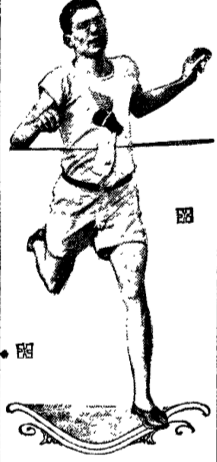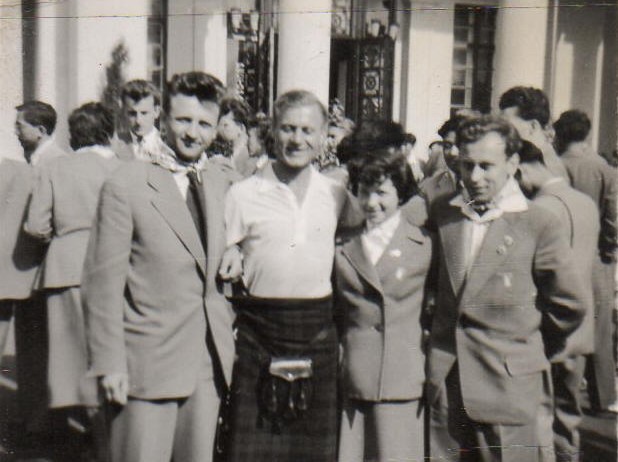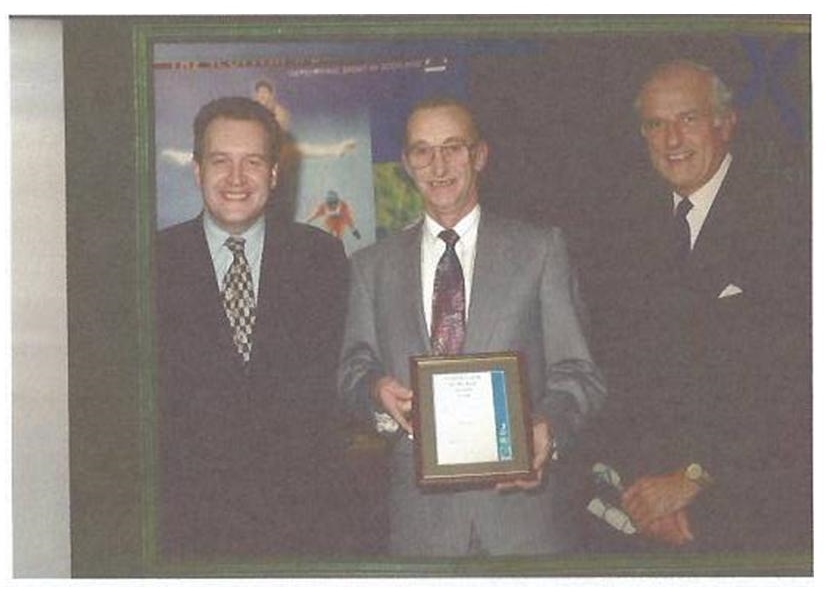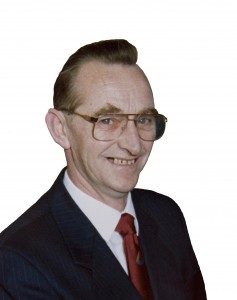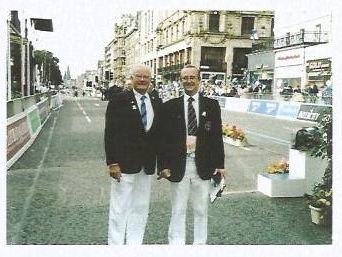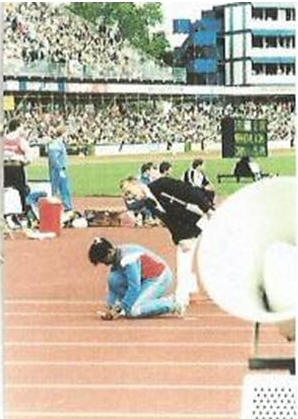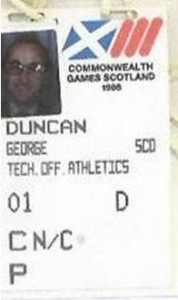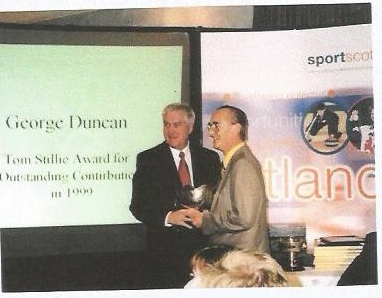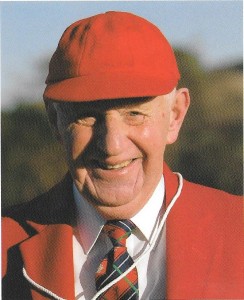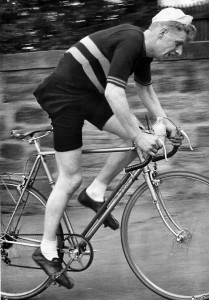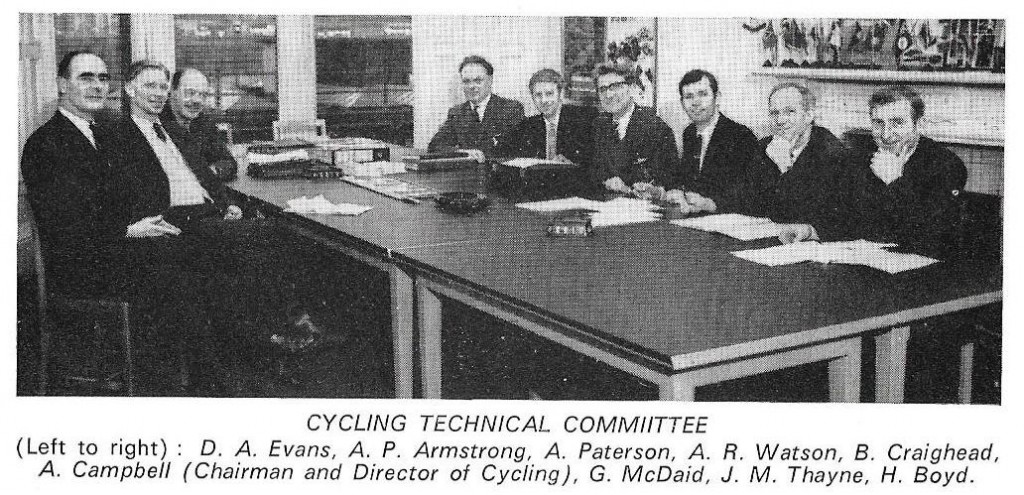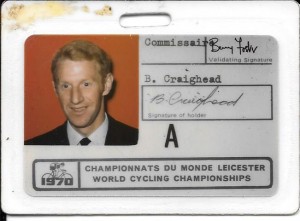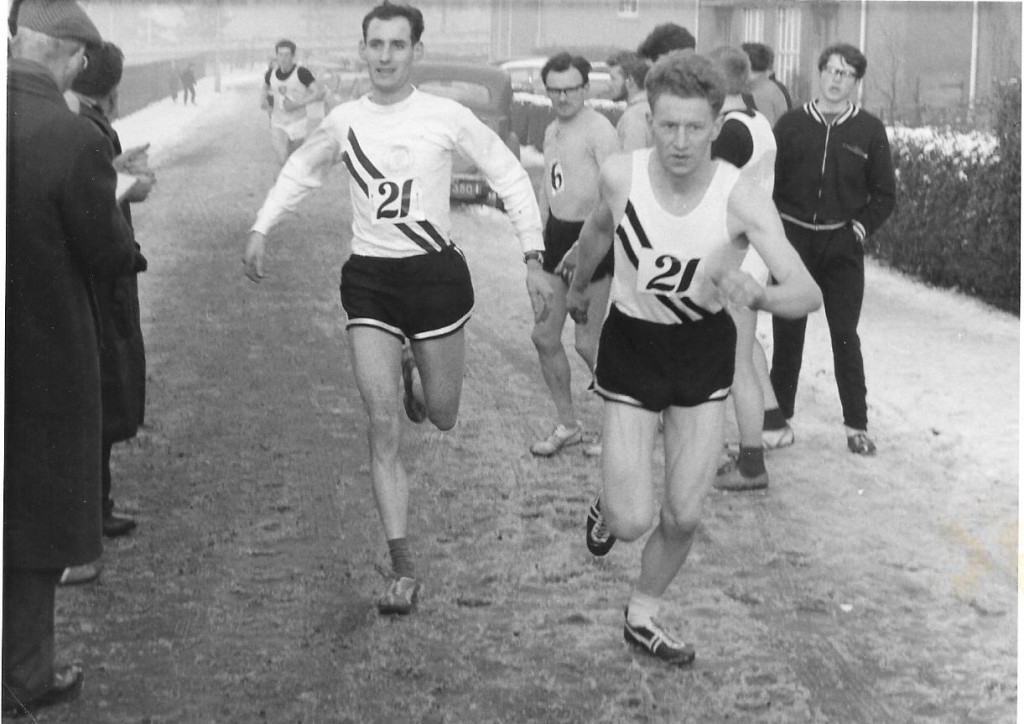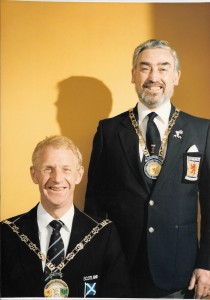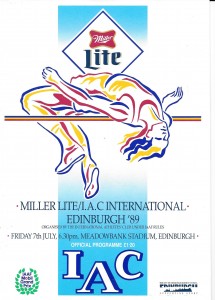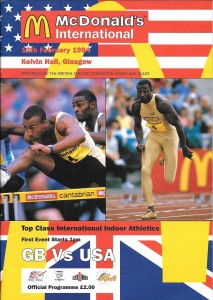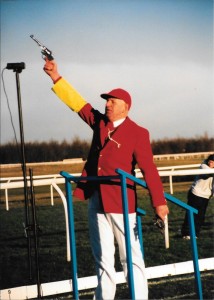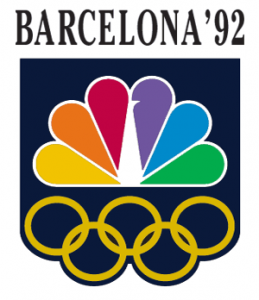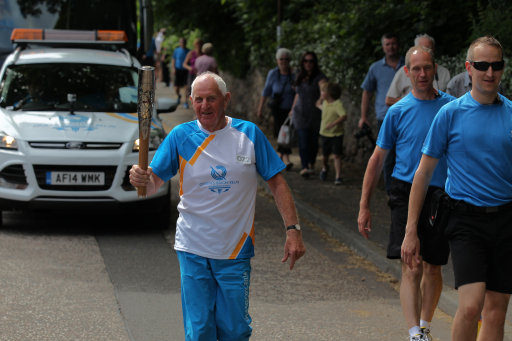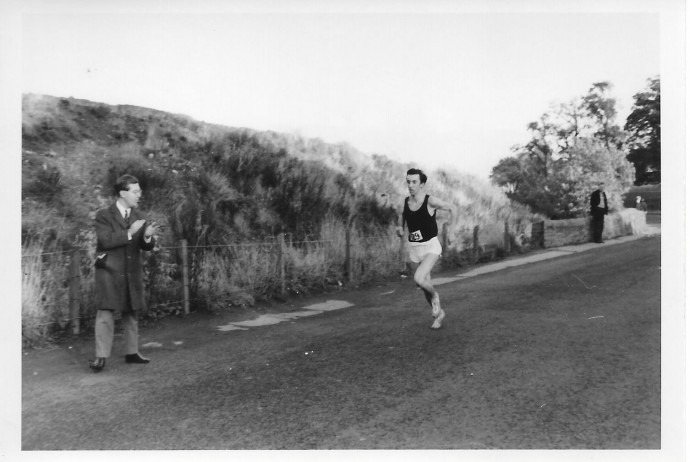
Author: Admin

George Duncan
I first met George Duncan in the mid-1980’s when I became team manager for the Clydesdale Harriers team in the Scottish Athletics League – it was a new venture for the club which went on to be a very successful squad over the following twelve or thirteen years. George was a great help to me in all sorts of ways and I soon learned to respect in the highest degree the volume and quality of his work. At a time when there were five divisions in the league, four of eight teams and one which sometimes had eight but often only six, and when all matches were held on a Sunday at two – or even three – different venues, George would have the printed results – individual positions and performances for every athlete in every division as well as team scores and league positions by Thursday morning’s post. This was not a wee six-month flurry of enthusiasm, it went on match after match, year after year with seldom a break. On its own that was a wonderful performance but there was much more to him than that.
To start at the beginning, George Duncan was not a lifetime athlete – in fact I can’t find any evidence that he ever ran a race in his adult life. His involvement in the sport began when, in 1975, his daughter, Margaret, brought home a letter from Perth Strathtay Harriers containing a plea for volunteer help. The club, as Doug Gillon said, “hit the jackpot, and so did the sport of athletics. Not only did George prove an outstanding club servant, becoming its secretary for 25 years, but he went on to coach a succession of outstanding competitors, and to hold just about every post of responsibility in the Scottish Athletics Federation.” When he died in 2000, after a short illness, at the age of 63, Doug reported that “it will be keenly felt far beyond his own home and family. Few people are irreplaceable, but track and field will need to enlist a regiment to do what George did in addition to his day job as joint-managing director of the Tayside Grain Company in Perth.”
Following on for a bit from Doug’s comment, George’s work-load was prodigious. In reply to a query, he once admitted to 40 hours a week was regularly done, unpaid, by his family on athletics business. On another occasion he replied that he had once calculated his expenditure on the sport and reckoned that it came to approximately £2000. But then like many officials, he was involved in the sport because he loved the sport. An old club official in my own club once said that ‘you do what your club needs you to do.’ This was a precept that George, and many another official lived by. His work went beyond the club and he did what his sport needed him to do. But essentially he was a member of Perth Strathtay Harriers where he was committee man, coach, trackside helper – and whatever was needed.
Club mate Jim Hunter has this to say: “I joined Perth Strathtay Harriers in the late 1970s… George and Margaret Duncan were firmly established as willing parent volunteers in the club. Their three daughters, Margaret (jnr), Ialene and Morna were all members at one time or another. Margaret helped with coaching, George was already the Club Secretary – a role he held for the next 20+ years. George was tenacious in his approach to getting things done – if he couldn’t do it himself he knew someone who could help. He always put the athletes at the centre of what was important. His volunteering interests were wide ranging. He was involved in many youth organisations in Perth and Kinross: The Boys Brigade, Perth and District Badminton, Perth and Kinross Sports Council. As I embarked on gaining my athletics coaching qualifications alongside his wife Margaret Duncan – George went down an ‘officials’ route…. and ended up a senior Marksman with Scottish Athletics. Margaret developed a successful sprints group and ‘team Duncan’ supported coach and athletes all the way. Names like Graeme Lammie, Jimmy Nicoll, Richard McDonald all were helped by George to reach their full athletics potential. George seemed to be able to meet any challenge with ease: officiating, organising leagues, teams, meetings with local and national organisations… But he was always there for the athletes, sharing a joke at training or at competitions “. Probably because of his deep involvement with his own club, George understood the feelings of members of other clubs – loyalty to Perth Strathtay did not blind him to the similar feelings held by others of their clubs. One example of this. Clydesdale Harriers started to take league athletics seriously in the mid 1980’s. The club worked its way up to the first division of four (as it was at that time) and in that season finished sixth, seventh and sixth in the first three matches and were sixth, well clear of the seventh team, going in to the final match. In that match, the club which was seventh ‘beefed up’ its squad by bringing in half a dozen athletes from a London club and so gained enough points to move up to sixth overall and we were relegated. I’ve never seen so many senior men, including several Scottish internationalists so deflated. George was not at that Meadowbank match but on the following Wednesday at an open meeting at Crown Point he put out a call for me to report to the admin room. When I got there he said he was sorry for what had happened to our club, he thought what had happened was wrong and would bring it up at the AGM. It was a thoughtful gesture.
Yet you could never call him one of the blazer brigade. More usually George would be found in his immaculate white shirt, with sleeves rolled up, mucking in wherever work had to be done. He was always a smoker: during any lull in proceedings, he would be found having a quick draw. Jim Hunter says that it was his infectious laugh and a cigarette in hand that remain firmly in his memory. Doug reports that ‘the once-fickle fire-alarm system at Glasgow’s Kelvin Hall was was believed to have been personally engineered for his convenience.’
George was perhaps best known to the athletics world as an administrator and official. He was a grade one track referee who officiated at the highest levels within Scotland including the 1986 Commonwealth Games, where the rules are rigidly applied. He cheerfully and diplomatically defused many heated moments, but his regard for the young was evident at one schools meeting where an Irish lad, on his international debut, stepped out of lane. He should, indeed, have been disqualified, but George dismissed the protest rather than traumatise the youngster and perhaps lose him to the sport. When the Scottish Athletics Federation replaced the former governing body, the SAAA, their first handbook had George noted in many categories: as an administrator he was convenor of the Track & Field Commission and secretary of Perth Strathtay Harriers, and as an official he was qualified as a Track Referee, a Wind Gauge Operator and Photo-Finish Film Reader. Not noted in the book, he served variously with the national governing body as chair of the track and field commission, on the international selection committee, part of that also as chairman. He was secretary of the Scottish men’s league for more than 20 years, chairman of the Young Athletes’ League for 13 years, treasurer of the Scottish Women’s League for 10 years, founder and secretary of the national indoor league, and a great friend of school athletics – most of that simultaneously. He was grants co-ordinator for lottery awards, and a proponent of the grassroots Sportshall athletics programme for the very young.
Alex Naylor once described a member of an SAAA sub-committee as ‘an apology for somebody who couldn’t be there’. We all know the kind of committee man he meant but George was far from that. He always stood up for what he thought was the right thing to do, no matter who he was up against. Some examples. First I quote from an article in the ‘Glasgow Herald’ of 6th November 1993.
” NOT for the first time, UK athletics rules have been changed for the benefit of English competitors to the detriment of Scots — but this time the English may have over-played their hand. George Duncan, convener of the Scottish Athletic Federation track and field commission, has appealed to the British federation, asking that a vote by the UK Women’s League last weekend be declared unconstitutional. The league voted 15-13 to exclude secondary first-claim members — namely, those who are members of one club for the purpose of local competition, but who also join larger clubs to compete at UK level.
The rule prevents large clubs monopolising top athletes and allows the smaller clubs which nurtured them to benefit locally. It is of particular benefit to Scotland, who have just three clubs in the UK league. An unsavoury whiff of sour grapes hangs over the vote which changed the rules, for it was aimed at City of Glasgow, who have just won the UK league for the first time. The English believe many secondary athletes were used. In fact, Glasgow used only one.
Duncan believes the league rule conflicts with BAF legislation which permits secondary competition, and fears that if the women get away with such a change, the men’s league may attempt a similar move at their annual meeting shortly. If successful, it would prevent many leading Scots from competing for their Scottish clubs next summer. The league also voted to become a senior-only contest, following the inclusion of female competition in the previously all-male McDonald’s Young Athletes League.”
That was George in one role, arguing on Scotland’s behalf with the UK Women’s League. This next extract speaks for itself:
“Athletics facilities in Glasgow cost almost twice as much to hire as the national stadium in Edinburgh or comparable facilities at Grangemouth and Greenock. ”The Scottish men’s athletics league has not hired any Glasgow track this year, because the prices we were charged for their other facility last season, at Crownpoint, were too expensive,” said league secretary George Duncan. ”The women’s league, of which I am treasurer, was presented with a bill for more than #500 for our first meeting this year. ”We finally settled for #461, but will not be going back. We can get cheaper facilities elsewhere. If the same price structure applies at Scotstoun, we will not be using it all – the leagues would go out of business.” Duncan, also chairman of the McDonald’s league for Young Athletes, confirms however, that they will use Scotstoun track this weekend.
”We will decide afterwards whether to continue,” he said. ”McDonald’s put #8000 into the young athletes’ league, so they can afford the charges, but the bank’s sponsorship is not a full commercial one – #1200 – so the women’s league certainly cannot afford such charges. ”With another sponsor, TSB, withdrawing from district, junior, and schools athletics next year, I can see very little prospect of events at Scotstoun. Both men’s and women’s leagues will continue going to Edinburgh’s Meadowbank, because it is far better value.”
Note that that’s George in three different league posts simultaneously – Men’s League, Women’s League and Young Athletes League. Many, indeed most, would shy away from any one of the three, it takes someone a bit different to take on three responsible posts and do them so well that at the AGM the comment is to recommend no change! And it was not just league issues that saw George Duncan spring into action. In the following report he is taking on the British Athletic Federation on behalf of Scottish officials. The BAF was threatening to remove many Scottish officials from their list of approved officials because they had not officiated in any match south of the border for two years.
“George Duncan, who regularly works more than 40 hours a week, unpaid, in 10 different roles from selector to coach, says: ”BAF haven’t staged a meeting here in all that time. Why should Scots suffer because of their failures? Driving to a BAF event in Birmingham, with no living expenses, means a 17-hour day. If BAF do not relent, I will withdraw from officiating at all events and serve only my club and schools.”
In Perth, on club coaching nights, he would be found with his clipboard, rain, hail, or shine. This continued even during the last months of his terminal illness. Two generations of successful athletes have reason to be grateful to him, up to his most major success, Richard McDonald, whom he steered to the silver medal in the 400m hurdles at the European under-20 championships in 1999. He was commended as Scottish Coach of the Year. Richard was best known as a 400m hurdler with a best time of 50.7, but he also had a 110 hurdles time of 15.53, 47.67 for 400m flat and 1:51.48 for 800m. Competitively, Richard ran in the Commonwealth Games of 2002, and domestically won the Scottish 400m Hurdles in 2002, was second in 2001 and third in 1997. If we need more evidence of his coaching, then we need look no further than James Nicol from the mid 80’s. James had a 400m pb of 47.11 and made the semi finals of the Edinburgh Commonwealth Games event at that distance. James also had a 10.7 100m and a 22.02 200m.
It says something about George Duncan that he was twice (1991 and 1999) awarded the Tom Stillie Memorial Trophy, a massive claymore presented annually to the Scot deemed to have contributed most to Scottish athletics. Only one other person has twice been the recipient – Olympic 100 metres champion Allan Wells. Locally too, his contribution was not taken for granted: he was presented with the George Mortimer Memorial Trophy for lifetime service to sport by the Perth & Kinross Council. He was himself a past chairman of Perth and Kinross Sports Council, and a driving force behind the establishment of the local sports medical centre. He was a leading figure in the Boys’ Brigade, and was active as a youth club leader in Blairgowrie where he grew up, one of a family of three girls and two boys.
In 2008 when the new all-weather athletics facility was opened in the grounds of Perth Grammar School at a cost of one million pounds, it was called the George Duncan Athletics Arena and a fine tribute to the man it is. Eight lane track with facilities for all field events and as much equipment as such a centre needs. Of course Perth Strathtay Harriers are proud to call it home. To mark the opening an athletics event was held on 10th August 2008. The Perth Common Good Fund Committee agreed to give a grant of £1000 to Perth Strathtay Harriers towards the cost of running the meeting – estimated to be about £7500, with a similar sum coming from the Corporate Financial Assistance budget.
Many compliments and appreciations were published after his death and a few are reprinted here. First, we have statistician Arnold Black’s tribute printed in the Scottish Athletics Yearbook in 2000.
“As this book goes to press, I have learned of the death of George Duncan. For the second time in preparing this book for publication, I am filled with emotion as I type a page. Everyone in Scottish athletics knew George Duncan. In my relatively short involvement in the sport, I have never come across anyone who worked so tirelessly for the good of Scottish Athletics, without looking for anything other than to benefit the people involved in athletics, whether they be athletes, officials or sponsors.
He has been a great supporter of the Scottish Association of Track Statisticians, by speaking up for s when he felt it necessary, by providing us with information, by selling books for us, often paying us in advance before the books were sold. e had no hesitation in inviting George to be the first Honorary Member of the S.A.T.S. I hope he would have enjoyed this book, which contains a foreword by one of the young athletes he helped progress in the sport, Richard McDonald.
There are people in athletics who work to some hidden agenda. George was not one of them. He was always fair, honest and supportive of good causes. He was tremendously helpful to me personally and i consider it a pleasure and a privilege to have known him.
I will miss him. I feel sure everyone in Athletics will miss him. One thing is certain – Athletics in Scotland will not be the same without him.”
Doug Gillon said that “I found George a marvelous and highly intelligent enthusiast for the sport, whose work was prodigious. At a personal level I found him most helpful, approachable and encouraging, and that resulted in, I believe, a heightened profile for the sport.”I
Charles Bannerman from Inverness had this to add:
“In 1988, Inverness Harriers finished second in the SYAL behind Clydebank. This was the first year that the Scottish champions were invited to compete in the English Auxiliary Final but Clydebank had to turn the invitation down because, due to the ineligibility of a large number of their English second claim athletes, they didn’t have a viable team.
The invitation then passed to Inverness who duly went to Birmingham armed, among other things, with 130 sprigs of white heater to distribute as gestures of goodwill. Immediately after that final George, in his SYAL capacity, had a letter in the Inverness Courier praising the manner in which Inverness had represented Scotlandat te event. That certainly did the club a whole lot of good on the local scene at a time when upgrading the Queens Park was an ongoing campaign.
My own recollections of George are that I simply could never understand how one man could put in so much top quality, high level voluntary work on behalf of a sport.”
Barry Craighead
Barry Craighead is one of the best known, best liked and most respected figures in Scottish athletics. Known to most of today’s athletes as a starter, he has in his career been a top class cyclist, a runner with Edinburgh AC, an administrator, and an official operating to the highest international standard.
Many very good Scottish athletes such as John Kerr, Hugo Fox and Hugh Mitchell started out as cyclists. Several athletes have turned to cycling too but few have achieved as much as Barry has. He was a cyclist for 18 years and a good one at that. He won the Army cycling championships when he was doing his national service and rode for the Army in the Tour of Britain race. We have a gallery of some of Barry’s souvenirs linked to this profile which contains some evidence of this. Seeing himself mainly as an endurance cyclist cyclo-cross competitor, in 1958 he covered over 235 miles in 12 hours on the bike, in 1959 aged 21 he won the Scottish Cyclo-Cross championship and there is also in the gallery a certificate he received when he finished third in the East of Scotland Championship after covering distances of 25, 50, 100 Miles and 12 hours at an average speed of over 21 mph.
Barry became involved in the organisation and administration of cycling and in 1970 was a member of the Cycling Technical Committee for the Commonwealth Games as well as being involved in athletics at the same Games. Indeed, such was his enthusiasm that he remained on the Commonwealth Games organising Committee for both sports – 12 years for cycling and 15 years for athletics.
Barry was also the first Scot to become a Commissaire – an official in competitive cycling who equates pretty well to that of referee at an athletics meeting: he supervises the organisation of the race, briefing the riders and officials, checking that all equipment complies with regulations, is responsible for resolving disputes and complaints and so on. In 1970 after the Games at Meadowbank, he acted in that capacity at the World Championships in Leicester. A talent that probably nobody in athletics knows about, is that of cycle wheel changing – read on.
“When the Scottish Milk Race sets of from Glasgow next Tuesday, the 52 world class cyclists competing will be relying on one of the most important men behind the scenes to keep their wheels turning – Barry Craighead from Edinburgh. Service operator Barry will be responsible for on-the-road repairs during the 5-day 55-mile event aided by a team of six cycle mechanics. Barry holds the world’s record for a complete wheel change – 23 seconds . The spare parts for the race could fill a cycle shop but competitors will be hoping they won’t be needed.” The article continues but the important part for me illustrates another of his talents.
While he was in the Army with cycling as his real competitive sport, he started cross-country running as a means of getting fit for cyclo-cross. He ran well, won the Scottish Army championship and started to take running a bit more seriously. On demob from the army he joined Edinburgh Athletic Club – again the aim was to get fit for cyclo-cross events. He always saw himself as an endurance cyclist. Running, however, increased in importance. Barry only ever had the one club – Edinburgh AC – and he raced in their colours in many races such as the Ben Nevis and other hill races, road races, the Musselburgh Festival and the National at Hamilton. On the track he ran in the steeplechase – at Westerlands in the SAAA Championship in a field of 12 runners, he went to the front with a lap to go and then caught his spikes in the water jump barrier, tumbled into the water, and that was the end of the race for Barry. On occasion when the club was short of a runner, he turned out in the 800m. Others training at the same time were Eric Fisher and John Fairgrieve, both very active in Scottish athletics and known throughout the country. Doug Gillon, athletics journalist, was also a member of Edinburgh AC at this time and says:
His running career merged into his career as an official and eventually the officiating took over.
Barry taking over in a relay for Edinburgh Athletic Club:
(Note Bertie Cox of Greenock Glenpark Harriers in the back ground, and Jim Keenan who started with Springburn Harriers before moving to EAC)
His running career merged into that as an official which eventually took over. When he first became an official, there were not many starters about and his mentor was the highly respected Bill Fulton, and there was also help and encouragement from the legendary Fred Evans. His first event as a starter was at a Forth Valley League match at Newhaven track in Edinburgh and he ‘served his time’ and honed his skills at many local events, before becoming a chief starter eleven years later. Barry’s career as an official developed, and in 1971 he was appointed Chief Starter for Scotland. A Chief Starter is qualified to take charge at all events of all standards up to and including Olympic Games. At that time there was a Chief Starter and others graded 1,2 or 3. There were approximately 25 starters in the country then. But starting, although the main focus of his involvement in the sport, was not his only involvement.
As with all enthusiastic and talented individuals, he was soon on to the EAC committee and in 1975 was elected to the East District Committee of the SAAA. A contemporary there of Oliver Dickson and Bob Greenoak he became District Secretary – a position which he still holds in 2015. One of the genuine characters of the sport and a highly respected and capable man, Barry’s friend Claude Jones was a member of the national cross-country union and by chance they became Presidents of their respective bodies in season 1983-84 – Claude the SCCU and Barry the SAAA. This was the first time that two men from the same club had held both offices simultaneously.
Meanwhile his progress as the country’s top starter continued and grew even more. He was soon officiating at 48 – 50 events a year, sometimes over 50 races at a meeting. He worked on the hill race circuit, at road and cross-country races but mainly in track, including some highland games meetings. Not only was he in demand for national and district championships, he was officiating at British events. In 1986 he was chief starter at the Commonwealth Games in Edinburgh which he counts as a great experience. It is really impossible to list here all the internationals in which Barry has started but two will serve as examples of the standard. At Meadowbank in July 1989, he was chief starter at the Miller Lite/IAC International meeting where runners such as Merlene Ottey, Kris Akabusi, Paul Ereng, Johnny Gray, Linford Christie, Denis Mitchell, Said Aouita, David Moorcroft and Sally Gunnell were all competing, and at Glasgow’s Kelvin Hall in the McDonald’s International in February 1994, there were Kirsty Wade, Bev Kinch, Colin Jackson, Linford Christie, Jonathan Edwards (60m invitation), Katherine Merry, and others of similar calibre.
Between those events, Barry officiated at the Olympic Games in Barcelona, the only Scottish official to do so. He had to go to Spain the year before the Olympics for three weeks to be checked for skills and competence, etc but also so that he could run the rule over the situation there. Mainly involved in the rowing events, it was the first time in history that electronic timing had been used for rowing events. The big events were happening with ever increasing frequency.
Barry has operated at local, Scottish, British, European, Commonwealth and Olympic levels. A record that not many can match.
A list of events where he has been a key official would include –
* Chief starter at the Commonwealth Games in 1986;
* Chief starter at the World Cross-Country Championships in Edinburgh in 2008;
* Chief starter for the European Cross-Country Championships at Holyrood for several years;
* Chief starter for European Championships for People with a Disability;
* Chief starter at the Transplant Sport UK 3oth Anniversary event in 2007;
* Starter at numerous international fixtures – note the examples above.
* Among the top athletes who have ‘come under his gun’ but not noted already are Allan Wells, John Walker, Ed Moses, Mary Peters, Michael Johnston, Calvin Smith, Carl Lewis, Sydney Maree, Seb Coe, Zola Budd, Liz McColgan, Yvonne Murray, … in fact virtually all of the top athletes for several decades would be included in any list pretending to be comprehensive. When Oscar Pistorius set a world record in Manchester in 2010, Barry was the starter and as such had sign the record application form.
Some incidents stand out – as when he recalled the field at the International Cross-Country race in Edinburgh in 2008! When asked about it he simply says that there was no doubt that the Frenchman and the Spaniard broke the line.
Barry still operates at the National cross-country championships, helps organise and officiates on the day at the Traprain Hill Race and at the professional New Year Sprint. One of his remarks, quoted in an article in ‘My Race’, a Scottish running magazine, was “Starting races for youngsters is most enjoyable … it’s great to see 300 kids in a line.” Not surprisingly he has officiated at the Scottish Primary Schools cross-country championships since they started in the 1980’s.
But people like Barry are seldom involved in one role in any sport and Barry has proved himself a more than adequate administrator. Currently on his club committee where he is Honorary President of Edinburgh Athletic Club in succession to Donald Gorrie, while Moira McGuire is chairman and working club president, having taken over from Barry who has been twice elected as President and Chairman of the club..
But there were several careers going on at once as far as Barry and athletics was concerned. His position on the SAAA led to further international experience as a team manager. In this capacity, he took a Scottish team to Budapest for an international fixture. As a member of the Hill Running Commission set up when the SAAA was re-formed as the Scottish Athletics Federation, he was their East Area representative on the Federation from the very start. In this capacity he managed hill running teams in Austria, Italy and Zermatt in Switzerland.
There have been other tasks undertaken too – many of long duration. Barry looks after Scholarships and Grant Applications for Fife, East and West Lothian which while not as numerous as in the past, is important and not taken lightly. When the Thistle Award Scheme started up in Frank Dick’s time as National Coach, Barry and Jeannette Heggie were involved right from the start. It was a job that was to carry on for 24 years.
*
Like most of the officials of his generation, Barry had a working day well away from the sport that he loved and that was taking ever increasing amounts of his time. Barry started out as a joiner but for the last 25 years he worked for the Northern Lighthouse Board which meant travelling all over Scotland and to the Isle of Man as well. Back in East Linton, and a member of the Dunpender Community Council for 14 years, he is highly respected in the community where he has several responsibilities – he looks after the Community Hall, he is on the Police Committee (CAAP), helps with school sports meetings and works with the schools on Fairtrade Projects. The organisers of the Musselburgh Riding of the Marches Festival are organising and exhibition to encourage children’s sport participation and will have Barry’s starter’s uniform and memorabilia on display.
Starters are such a common part of the scenery at athletics meetings that they are seldom given much thought. If we take a minute and look at the demands made on them we look first at the most dramatic item of equipment in the entire arena – the gun. The starter is not allowed to travel on public transport to the meeting and has to park his car as close to the entrance to the arena as possible. He has of course to pay for the gun and the ammunition himself. How much does a good gun cost? Around £300, and remember that most starters have at least two because they often have to fire a recall gun. He has to purchase his own guns and keep them safe. The starter’s uniform until recently was red blazer, white shirt, tie, white trousers and white trainers, all purchased by the starter. The rules have now been relaxed with dark trousers being worn with a red polo shirt, although Barry still likes to wear the red blazer at track, cross country and highland games He also has to purchase wet weather gear which is essential in Scotland. On occasion Barry has been mildly twitted about wearing the full rigout to cross-country or hill races but that is what starters wear. They wear it for a reason and there is no real reason NOT to have it at any meeting.
The reduced number of starters in the country gives Barry cause for concern. There are now only 10 – 12 active starters. When asked why this is so, he thinks that it is partly because of the increased bureaucracy but also because of the expense. Remember that the new starter has to buy his own uniform, buy his own gun, buy his own ammunition. There is a small fee from meeting organisers but that is small compared with what the new official has to pay out in hard cash to start with. Barry does not make a big issue out of the expense, nor does any other official that I know, but it would be good were one of the sponsors of the sport take on the responsibilities of supporting the legitimate expenses of this dedicated body of men and women. Field event officials for instance are seen with weighty bags of equipment which is necessary for efficient organisation but which is often in short supply or faulty at the venue, timekeepers have to have appropriate watches, etc. These and other genuine expenses, including appropriate clothing should maybe have some priority in spending plans.
However, Barry’s contribution to the sport has been recognised by various bodies and the main awards have been
1996 Scottish Sports Council National Service to Sport Award
2008 Scottish Athletics Lifetime Achievement Award
2014 British Athletics Award
For the last one, the citation read that it was 40 years service – when in fact he had 54 years service behind him at that point. He was also given the honour of carrying the Queen’s Baton for the Commonwealth Games in 2014 as the representative of East Linton.
Just reward for a man who has been cyclist, athlete, administrator and official; as an official he has been starter,marksman, track judge, commissaire; he has filled the role of international team manager and also held various roles at club, district and national level. Like others who have kept and keep the sport running, he demonstrates a level of efficiency and commitment across several roles without demur. You can see all Barry’s pictures at this link
Barry carrying the baton through Dirleton, East Lothian
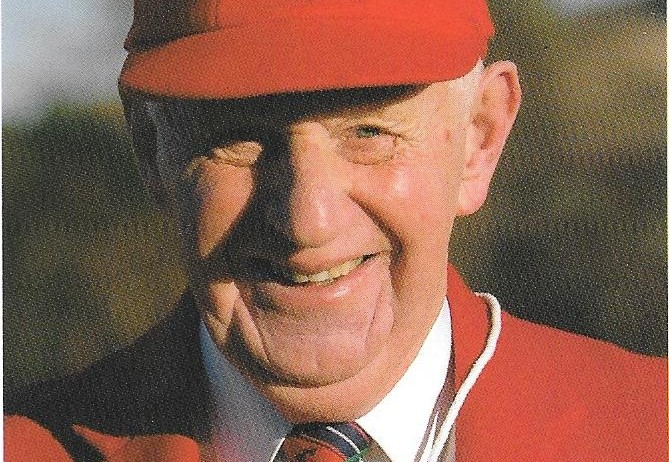
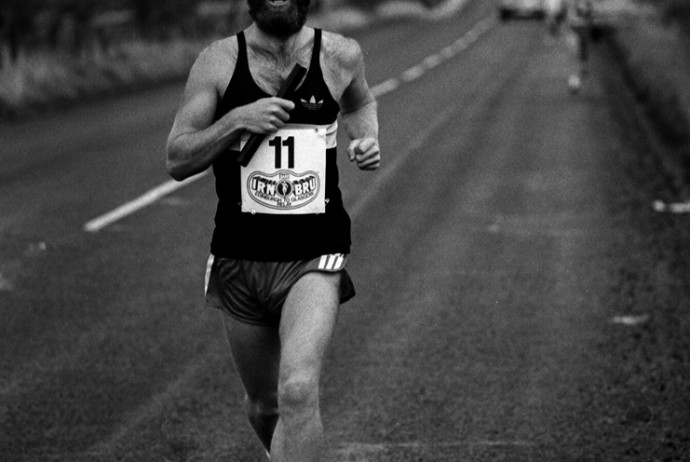
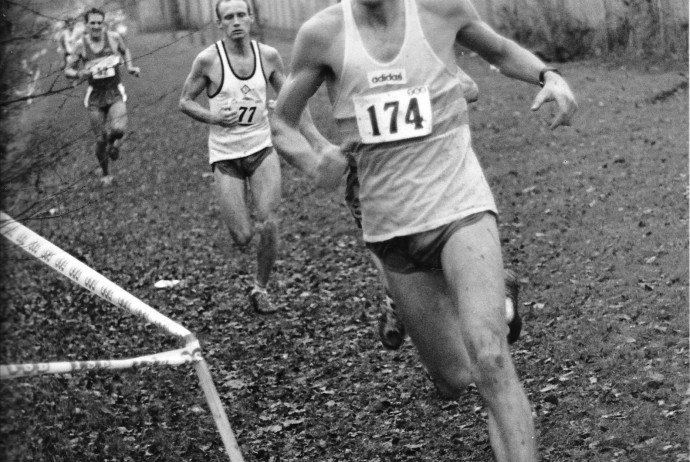
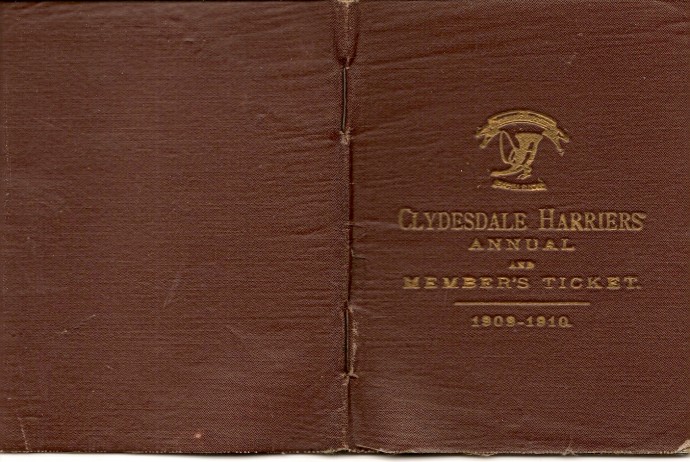
Clydesdale Harriers: 1911 – 1922
[Not a valid template]
Kenny Phillips: Official and Administrator
Click to go to Kenny Phillips: the runner
This interesting section is not really only about Kenny himself: it concerns the running of athletics in a locality, any locality although this one is in Beith. It illustrates the difficulties that beset any voluntary organisation and all the problems that arise from raising the funds to the occasional unsympathetic official and relations with the governing body.
Kenny returned from Lancashire to Stewarton in 1962 and replaced Harry Maxwell as Secretary of Beith Harriers with Mattha Barr and Hugh Walker as Chairman and Treasurer. The Ladies Section was at a standstill as they had lost the use of the Backburn School but they were thanked for helping with the teas at the New Year’s Day Race and for organising the Bus Run. Members subscriptions were raised from 15/- to £1 for Seniors and from 1/6d to 2/6d for Boys. The District Council was to be asked to organise a Sports Meeting. Harry Maxwell and Kenny were appointed as Representatives to the Ayrshire Harrier Clubs’ Association. The Committee was authorised to spend up to £100 to make the Clubhouse watertight. During his annual report for 1962-63, Kenny congratulated the cross country runners, despite the difficulty in getting sufficient numbers, of being second in the Ayrshire and SW Relays and first in the Ayrshire and SW 6 miles. During the track season, Beith members won prizes at almost every sports meeting but he complained that no team events were entered, training was done individually instead of in groups, the Clubhouse was neglected and the Ladies Section did not meet. The only summer club activity was the Bus Run to Balmaha. Outstanding individuals were:
Ian Harris, who won the Scottish Marathon and was in the Army Cross Country Team which won the Inter-services Cross Country Championships.
Danny McFadyean, who won the Navy, then the Inter-services Cross Country Championship and, the following day, was 12th in the Scottish Cross Country Championship.
Tom Cochrane, who won the Ayrshire 6 miles, SW 6 miles, Club Championship, 9th in the Scottish Cross Country Championship, represented Scotland at San Sebastian, won the Ayrshire 3,000m and 3 miles Championships.
Tom Findlay, who was first in the Boys Ayrshire and second in the SW races.
Jim Millar, who won the Ayrshire 1 mile and was 3rd in the Ayrshire 1/2 mile.
Dave Shedden, who was 2nd in the Ayrshire 100 yards and long jump and in the Scottish Junior Championships was 2nd in the long jump, 3rd in the 100 yards and 220 yards.
*
In 1966, Kenny, along with Harry Maxwell, when representing Beith Harriers at the Ayrshire Harrier Clubs’ Association, were appointed as Secretary and Treasurer of the AHCA. The Chairman was former Clydesdale Harrier Ernie Thursby who was good at getting others to do the work. Harry arranged 12 Ayrshire sports meetings in the winter at Ayr, Kilmarnock, Stewarton, Harriers Vs Cyclists at Irvine, Dundonald, West Kilbride, Beith, Cumnock, and Girvan. He invited teams from schools and youth clubs and, as the Commonwealth Games would be held in Edinburgh in 1970, he asked for anyone interested in forming a new club, helping at races or attending courses for Coaches, Judges, Timekeepers, etc.
The total funds of the AHCA received by Kenny as Treasurer amounted to £16 in cash and the former officials were horrified when Harry and Kenny decided to spend it all at the first track and field event at Irvine Meadow’s football ground. The meeting was a financial and athletics success and set the pattern for future events.
Kenny wrote to the 16 Town Councils and all the factories in Ayrshire asking for sponsorship and the £5 and £10 donations soon mounted up. Some of the Town Councils promoted Gala Days, for which the AHCA provided Officials and helpers.
Harry, in conjunction with Ayr County Council’s Community Development Officer, arranged a series of meetings in the winter in Kilmarnock to train Coaches and Officials under the tutelage of experts such as Dickinson of Jordanhill College, Chapman of the Scottish Council for Physical Education, and then in the summer at the Dirrans, Kilwinning, under Anderson, National Coach. Coaching certificates were issued by Ayr County Council to all those taking part. At its peak, 500 competitors took part in the Ayrshire track & field championships, 800 at the Cumbrae 10 miles road race and 800 at the Stewarton cross country races. At a later time at the Largs Inverclyde Centre, Frank Dick gave further instruction and led discussions about coaching and administration of athletics under the new Scottish Athletics Federation. Frank was not happy when Harry and Kenny disagreed with some of his suggestions. When Harry arranged a Coaching Exam, all the Ordinary Coaches passed but the only 2 applicants for Senior Coach, Harry and Kenny, were failed by the examiners, Frank Dick and Alex Naylor.
1n 1973 some Ayrshire athletes proposed the amalgamation of all the harrier clubs in Ayrshire in order to field a stronger team in the League. This found general favour but Beith Harriers suggested several conditions:
1 The club should promote athletics for all athletes, whether competing for fun or at higher levels.
2 The headquarters and centre of activity should be Irvine.
3 The club should start on a sound financial basis, say, £200.
4 The Community Development Service should be brought in with the aim of appointing a full-time professional sports administrator, similar to that at Grangemouth.
5 Negotiations should start with the Director of Education, Ayr County Council, and Irvine Development Council to get a Stadium-Sports Centre at Irvine with full-time administrator.
6 There must be a working committee, meeting at least every two months, to avoid the club relying entirely on the Secretary.
At the Beith Harriers Annual General Meeting on 3rd March, 1974, a discussion took place on whether all the members should join the Ayrshire Athletic Club. Some members felt that the proposed constitution and organisation of the new club would be to the detriment of young athletes, existing sports meetings and the maintenance of the Beith Harriers Clubhouse. Those members who wished to join Ayrshire AC then left the meeting.
On 1st July, 1974, Beith Harriers Committee allocated the use of the Clubhouse to:
Karate Club, Monday, Thursday and Saturday morning; Ayrshire AC, Tuesday; Beith Harriers, Wednesday.
Each section to contribute £25 per annum and the Karate Club to get a 5 year agreement in writing.
On 11th September, 1974, it was reported back that Beith Harriers were now the only member of the Ayrshire Harrier Clubs’ Association, as all the other clubs had joined the Ayrshire Athletic Club, which in turn refused to join the AHCA. Harry Maxwell and Kenny Phillips were authorised to take control of the AHCA and organise the Ayrshire Championships at Beith. In 1975, the SAAA declined to investigate the AHCA but Jim Young former Secretary of the AHCA agreed to hand over the books to Beith Harriers for administration. Ayrshire AC no longer wished to use the Beith Clubhouse and it was agreed to share the costs of maintenance with the Karate Club as before, viz, £25 each.
On 3rd September, 1975, in the Beith Harriers Clubhouse, an Open Meeting of the AHCA was held of all people interested in the promotion of athletics in Ayrshire. Seven events were proposed, Ayrshire Relays at Beith, Harriers Vs Cyclists at Irvine, Stewarton Cross Country, Ayrshire Championships at Cumnock, Kilmarnock Youth Panel at Kilmarnock, New Year Races at Beith and Carrick Youth Panel at Maybole. A Management Committee was formed consisting of President – H Maxwell, Secretary – K Phillips, Treasurer – T McCulloch, Affiliated Club Beith Harriers – 2 members, T Cochrane, J Sloss, Sponsors 1 member – A McMaster Maybole Community Association, R Ballantyne Stewarton Sports Association, W Fulton Irvine Recreation Club, I Turnbull Kilmarnock Youth Panel.
However Ayrshire AC gradually broke up and the individual former clubs regained their independence and rejoined the AHCA.
At the Beith Harriers Annual General Meeting on 29th April, 1977, it was agreed not to affiliate to the SAAA but the members would run for the newly formed Longbar AC for a season. Affiliation to the SCCU was agreed for the coming winter season. Amalgamation of Beith Harriers and Longbar AC was proposed on 9th September, 1977.
At the reorganisation of Local Government in 1975, Kenny applied for the post of Director of Leisure and Recreation of the newly formed Cunninghame District Council. He was selected for the short leet of three. One applicant coached international swimmers in Aberdeen and withdrew at the interviews as he wanted to continue coaching his swimmers. One applicant was a weight lifter and Kenny had 29 years experience in local government and athletics. A prominent Strathclyde Regional Councillor, known as the Silver Fox, had met Kenny some time before in the Ayr County Buildings canteen and told Kenny that he had been taught his Marxism by Kenny’s father. Before the vote, the Silver Fox, now a District Councillor, blackballed Kenny by telling the other councillors that they would not want a Communist as a Director.
On 23rd December, 1978, it was agreed to sell the Clubhouse to Beith Karate Club for the sum of £2,000, to be paid over 5 years.
In 1984 Inland Revenue appointed a Tax Inspector in Ardrossan specifically to collect Corporation Tax. Cunninghame District Council had printed a small handbook for the benefit of the public showing all the clubs and recreational organisations in the district. This Tax Inspector classed all these clubs as Corporations and sent them tax forms to complete showing any bank interest credited and any assets acquired or disposed of in the past two years. Only two clubs, Beith Harriers and Dreghorn Boxing Club took the trouble to fill up the forms. A member of the Dreghorn Boxing Club visited the Tax Inspector and warned him that if he received any more such demands he would return and punch in his head. Beith Harriers were then plagued with further demands for details of the interest from 1980 to 1985, the cost of the clubhouse in 1934, details of the actual sale, date of sale and full postal address of the Clubhouse. The Tax Inspector refused to cease his demands despite explanations about the struggle for 60 years to build and maintain the clubhouse and develop athletics in Ayrshire, When the maintenance of the clubhouse become too much, it was offered to the District Council and Regional Council for recreational use but they declined and suggested offering it to the Karate Club. Any income was ploughed back into the sport for prizes and events for the benefit of the local community. Advice was sought about obtaining charitable status and a Covenant to pay Ayrshire Harrier Clubs’ Association the sum of £200 per year for 10 years for the purpose of promoting Amateur Athletics in Ayrshire. The Tax Inspector was prepared to accept that no Capital Gains arose on the sale of the Clubhouse to the Karate Club but he issued assessment notices for sums ranging from £33.90 to £76. A request to delay any Sheriff Office or Court proceedings was refused. and a further tax of £60 on the Covenant was demanded. Help was requested from the Scottish Sports Council, Cunninghame District Council, the 4 Ayrshire MPs, pointing out that the covenanted £200 was liable to £60 tax and that the £200 received by AHCA made them liable for Corporation Tax returns. Instead of saving tax, athletics in Ayrshire would be worse off. No member of staff of the Finance and Accountancy Department of the Glasgow College of Technology was willing to help and advised that an accountant should be employed at commercial rates. William McKelvey, MP, wrote to Nigel Lawson, Chancellor of the Exchequer, and received a reply on 8th May, 1986, explaining that Clubs such as Beith Harriers were liable for Corporation Tax and that there was no case for singling out this kind of body for favourable tax treatment. The complicated tax returns would be avoided by the intention to apply tax deduction at source. Mr McKelvey was “sorry not to have been more helpful but an incoming Labour Government is committed to ensure that truly non profit making organisations are able to flourish more readily.”
Kenny wrote on 12th March 1987 to George Younger, MP, requesting him to have another word with Nigel Lawson, as Beith Harriers were still being persecuted by the Inland Revenue, despite the letter from the Inland Revenue Operations Division confirming the redeployment of 850 staff to catch tax evaders and almost apologising for the fact that in the Ardrossan District these staff had decided to concentrate on the voluntary youth organisations etc instead of proper businesses involving larger amounts of tax. These threats had caused the resignation of the President, Secretary and Treasurer of Beith Harriers and the club was faced with the prospect of folding up. James Swindale wrote to the Inland Revenue Solicitor on 5th July, 1988 …”Beith Harriers is a non profit making body and all income is ploughed back into the sport. Following the reduction in our membership, in recent years there has been a net loss but it appears that this can not be offset against profits, unlike proper Corporations which can afford to employ accountants. Our funds are now reduced to about £132 and we shall have difficulty in paying our annual subscriptions to the Scottish Cross Country Union, £35, Scottish Amateur Athletic Association, £37, Scottish Women’s Cross Country and Road Racing Association, £20, Scottish Women’s Amateur Athletics Association, £42, Cunningham District Sports Council, £5, Garnock Valley Youth Panel, £3, and Ayrshire Harrier Clubs’ Association, £2-50. In addition, each year we promote and sponsor local sports meetings, viz. Beith New Year Races, Beith Civic Sports, Dalry Civic Sports and Bigholm Road Race. I trust you will give this matter your careful consideration and use a modicum of common sense instead of continuing the action of the Tax Officers who have a duty to follow the rules of the Tax Laws once the bureaucratic machinery is set in motion” Further demands and threats of poinding goods and chattels were issued until James Swindale wrote to the Inland Revenue Solicitor on 8th February 1989 that “the three temporary office bearers have been unsuccessful in their struggle to keep Beith Harriers going. When the funds were exhausted, it was impossible to continue and the Club was disbanded.”
It has taken 30 years for the Government and Inland Revenue to treat Sports Clubs, etc. in the same way as Charities for Tax purposes and Clubs can now claim back tax in respect of membership fees.
***
Kenny organised and promoted many athletics events over a long number of years and as an Office Bearer of the Ayrshire Harrier Clubs’ Association he served as judge, timekeeper and referee at track & field events and laid trails for cross country races. When he retired he was able to help during the day with indoor schools, university, blind & deaf meetings and kept himself up to date by qualifying as a Level 2 Field Judge Official and Cross Country Official. When he came to renew his UK Licence, an ex-policeman had been appointed as Welfare Officer and refused to accept the application form as Kenny refused to tick a box consenting to the information being passed to other Government organisations and law enforcement agencies. Kenny knew a Housing Officer, who worked at weekends as a Special Constable and boasted that he could get into the Police files to gather information about his housing clients. A Government Minister had left a dossier of confidential files on a public park bench.
The following three letters from Kenny give a fuller explanation:
29/2/08
D Brown, CBE
Athletics Welfare,
Sale.
Dear Mr Brown, Disclosure Scotland – Officiating
I thank you for your letter of 6/62/08 formally requesting me to complete a Disclosure Scotland enhanced disclosure check.
I have no objection to the Police making such a check and, in fact, it is their duty to do so if they have any suspicions. They have already checked all the adults in my street before the safe housing of at-risk young persons in my street by the Social Work Department for East Ayrshire Council.
What I object to is the box in Part E of the application form consenting to the information being passed on to other Government organisations and law enforcement agencies and the payment by Scottish Athletics of £10 per form to the Police.
In my opinion the present Government has a fixation with ID cards and DNA data and plans to enforce it with underhand methods, such as passports, driving licences, job applications, student bank accounts and loans, housing benefit, etc. Disclosure Scotland is just one of these ploys. Four million people are already on the DNA database.
It is wrong to collect such data for everyone instead of targeting offenders as it attacks the liberty and basic dignity of the citizen and it is a waste of Police time, who at present can not cope with terrorists, murderers, burglars and fraud. The privacy of such date is notoriously lax and misused in many ways.
I have been involved in athletics for 60 years and I find that Disclosure Scotland is depriving clubs of leaders, parents and helpers, who can not be bothered with all the needless red tape.
Yours sincerely,
Kenneth Phillips.
12/9/2008
- Brown, CBE,
Athletics Welfare,
Sale.
Dear Mr Brown, Disclosure Scotland – Officiating
I refer to your letter of 10/9/08 informing me that UK Athletics Case Management Group had withdrawn my Technical Official’s Licence on 10/9/08 and that UK Athletics will notify all relevant organisations and accompany the written notification with photo identification after the 14 days period of Appeal.
I expected you as an officer responsible for Athletics Welfare to be aware of the Starting Rule, “Do not jump the gun”.
My club, Beith Harriers, and the Ayrshire Harrier Clubs’ Association, of which I am Vice-Chairman, were notified in July and instructed not to use me in any official capacity.
I wrote to you on 29/2/08 explaining my reasons for not completing the Disclosure Scotland form, mainly because of the lack of security with confidential and personal data but you have confirmed and exacerbated my concerns by threatening to notify “all relevant organisations” and publish it on the UKA website with photo identification. This contravenes the Data Protection Act and I expressly forbid you to disseminate such information.
I still have no objection to the Police making such a check and, in fact, it is their duty to do so if they have any suspicions. You have a right to withdraw my Licence but no right to pass on my data without my consent. As you have withdrawn my Technical Official’s Licence, there is no longer any need for you to hold any information about me and I instruct you to destroy it all immediately.
Yours sincerely
Kenneth Phillips
8/10/08
David Brown CBE
UK Athletics Ltd
Athletics Welfare.
Dear Mr Brown
I do not agree to you publishing any information about me on the UKA website, either as originally proposed or as amended.
The facts are:
1 I have for many years been a “Responsible Athletics Official” and complied with the “Terms and Conditions”,
2 I have no objection to a Police or CRB check and Cameron Ewing of Scottish Athletics told me at a meeting in East Kilbride that he would arrange that. Everyone in my street has already passed a Police check in connection with Social Work affairs. What I object to is the dissemination of such information among public bodies.
3 Nothing has changed since you issued my Official’s 3 yearly Licence in 2007. None of the circumstances in 5.1 for the withdrawal of a Licence applies. Nonetheless, I willingly give up my Licence if you insist on your need to disseminate people’s personal details.
4 You have not supplied me with the Information Commissioner’s formula, which is intended to deal with “offences”. The Information Commissioner’s primary duty is the protection of personal information.
5 You now agree that UKA is not treating this matter as disciplinary and that I have not committed any offence. Anything therefore published on the website would be vindictive and without justification.
In the event of any such publication, I shall hold both you personally and UK Athletics liable for damages and I again expressly forbid you to do so.
Yours sincerely
Kenneth Phillips
***
When the Scottish Athletics Federation was formed it was funded with £500,000 per annum and the Chief Executive’s main job was to attract more funding from sponsors. Kenny objected when his successor on appointment proposed that that a full-time person should be employed to deal with the sponsorship to enable himself to travel around Scotland visiting all the clubs. Most of the £500,000 appears to be spent on the salaries of a large number of staff but clubs are still expected to do all the work involving sports meetings. The number of staff appears grossly excessive when compared to the work done formerly on a spare time basis by Ewan Murray, Secretary of the Scottish Cross Country Union. Simple but essential things like the venue and starting times of sports meetings on the website fixture list are often missing. Kenny also complained about the Health & Safety aspects of the Finish Gantry at the National Cross Country Races during windy weather and the expectation that the Ayrshire 70 year old Volunteers would drive in 3 miles of fencing posts for the Edinburgh events. He suggests a better expenditure of the £500,000 would be to offer clubs, say, £200 to organise local, district and national events for all age groups, male and female.
